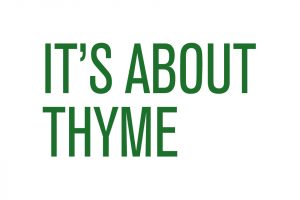By David Sargert
[dropcap]A[/dropcap]t the nursery, other than the weather, the election, and ‘when are ya’ll gonna move?’ the fourth most often asked question is: ‘I’ve got this rocky/clay soil … ’. Thankfully it’s the only subject for which we have definite answers.
(This article is the start of a series that will allow us to ‘dig deeper into dirt,’ and continue our ever-expanding scientific research, to help bring success to Hays Free Press readers in all gardening ventures.)
Texas A&M University identifies three types of soil for our region: The black clay soils of Pflugerville and parts of east I-35; the limestone ledge soils of west I-35; and the river bottoms of southeast Austin. All share the same high pH and clay levels and minimal organic materials.
First off, we have to admit we’ve been dealt a poor soil hand. Secondly, we have to realize that with a little bit of planning and effort, even the most barren of soils can be brought to life.
Last year I made soil for the back nursery garden. I started by tilling up the little topsoil that existed. I then layered four inches of composted hackberry leaves on each row, and one inch of cow/chicken manure on top of that.
I tilled this in for both fall and spring and had a fairly successful crop. The addition of 8-2-4 fertilizer rounded out the blend and I thought we were in pretty good shape. Plants looked healthy and yields were good.
However it seemed that the plants were not getting the right levels of nourishment toward the latter end of their production cycle, despite constant feeding. Adding to their distress were very heavy rains, flooded fields and blast furnace temperatures.
The following spring I tilled the soil again, and noticed that the tiller was easily able to sink its teeth another six inches deeper than the previous planting season.
From my architecture days, I was aware that organic material added to clay would create drainage. But I had to call one of my structural engineer buddies to better understand the science of what was happening to the clay/rock combination.
His explanation was very simple and elegant.
Think of clay as a stack of paper plates, which does not allow water to get through. And think of organic material as little BBs that work their way between the plates each time they’re watered.
Over time the clay becomes part of the organic mix allowing for drainage and root capillaries. All the while micro-organisms (little bugs) attach to the limestone. They feed on the other micro-organisms that have been attracted to the moisture laden stone, and it too begins to breakdown into the mix. This all made sense to me.
How do I get more of those ‘little bugs’ to eat all this clay and stone? Enter the Happy Frog.
Just about this time we took on a new product line I’ve told you all about before. Fox Farm – Happy Frog. I cannot say enough good things about the entire line.
It is quality through and through. The product that answered my call for little bugs was their Happy Frog soil conditioner. Not only does it boast 20 different kinds of micro-organisms, but it also contains clean compost, earthworm castings, bat guano, oyster shell, dolomite lime, humic acid and granite dust.
They guarantee the life of the little bugs in the package for 2 years; each 60 pound block contains 15 times more bugs than any similar product on the market. It is highly effective for planting beds, lawns and gardens – straight out of the bag, which I promptly did.
Never one to just leave it there, I began to experiment with adding horticultural molasses to each bed thinking that if I fed them well they would be fruitful and multiply, Oh boy did they!
Within days the beds perked up and new transplants took hold in record time. Since the bacterial colonies are becoming established I simply keep up the molasses every 60 days to keep them happy.
No need to add more bacteria, as they are doing a fine job reproducing themselves. The only thing I will be adding next year will be more earthworms as the beds with worms out-perform those without. Living soil, makes all the difference.
Each (compacted) block of Happy Frog soil conditioner fluffs out to about six square feet (or one wheelbarrow) and covers appx. 200 square feet of lawn and 100 square feet of garden/planting bed.
Come in and talk to us about how we can help you give long life to your soil. Happy gardening everyone!
If you have a gardening question, send it via email: iathyme@yahoo.com. (Please put ‘Ask Chris Winslow’ in the subject line.) Or mail your letter or postcard to: Ask Chris Winslow. It’s About Thyme: 11726 Manchaca Road, Austin, TX 78748





